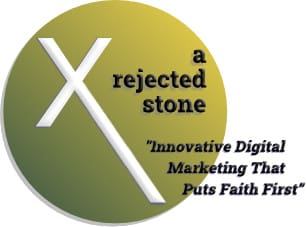
Five Essential Elements for a Successful Website
By a rejected stone, a Howard Taylor and Son Company — all rights reserved
A well-crafted website is more than just an online Church, nonprofit organization, or storefront; it’s a powerful tool that can attract new supporters, inform existing ones, and boost your brand’s online visibility. To ensure your website is effective, it’s crucial to include these five essential elements:
1. Clear and Compelling Call to Action (CTA) ∗
A strong CTA is the driving force behind your website. It’s the action you want visitors to take, whether making a purchase, signing up for a newsletter, or contacting you.
● Update regularly: Keep your content fresh and relevant by updating it regularly.
● Create urgency: Use time-sensitive offers or limited-time discounts to encourage immediate action.
● Place CTAs strategically: Position your CTAs in prominent locations, such as above the fold*, at the end of blog posts, or within product descriptions.
Pro Tip> In website lingo, “above the fold” generally refers to the portion of your website that people see before scrolling down or very close to the top of the page.
Pro Tip> Never feel like you are “overselling” or have too many CTAs. Whenever readers are convinced they want to contact you, please don’t make them hunt for a way.
∗ This section does not apply as much if you’re writing a Church website. However, you should still make it easy for people to contact you with questions. Also, it’s a good idea to provide an email link to the Pastor or an Elder if a person is in need.
2. High-Quality Content
Content is the backbone of your website. It attracts visitors, keeps them engaged, and helps you rank higher in search engine results.
● Create valuable content: Produce content that informs, entertains, or solves a problem for your target audience.
● Optimize for SEO: Use relevant keywords to improve search engine visibility throughout your content.
● Update regularly: Keep your content fresh and relevant by updating it regularly.
Pro Tip> Keep your content laser-focused, meaning don’t be redundant and stick to the facts. Most of the time, people are on your website for a reason. They often look to you to help them solve a problem or alleviate a concern. If they have to work to find out if you can professionally assist them, they are off to another site within seconds. As a general rule —If you can keep your webpage to 10 sentences or less, that’s ideal. Granted, it’s not always doable, but it’s ideal.
Pro Tip> Keep in mind that the less you write, the more of it they are likely to read
3. Mobile-Friendly Design
With more and more people browsing the web on their smartphones and tablets, it’s essential to have a mobile-friendly website. A mobile-friendly website is easy to navigate, loads quickly, and looks great on any device.
● Responsive design: Use techniques to ensure your website adapts to different screen sizes.
● Fast loading times: Optimize your website’s images and code to reduce load times.
● Easy navigation: Keep your mobile menu simple and easy to use.
Pro Tip> If your pages load slowly, your prospective customer will likely move on to your competitor. At the same time, search engines like Google will punish you by lowering your rankings. If you subscribe to our SEO service, we will automatically alert you if this problem exists and advise you on what to do. The two most common reasons for slow load times are images not optimized for web use or unnecessary coding that slows things down.
Pro Tip> whenever you create a page or make a change to one, ALWAYS verify it looks good on a desktop, tablet, or cell phone. Other devices also like watches and televisions. Cover as many bases as possible; you never know where your next sale will come from. Strike a good balance so all-sized devices look OK.
4. Strong Visuals
Visuals, such as images and videos, can capture your audience’s attention and convey your message more effectively.
● High-quality images: Use high-resolution images that are relevant to the content at hand. This is very important. You may be tempted to “cheap out” here and download free images and icons from the Internet. This can hurt you in two ways: 1) The exact images you get for free are the same as those on other websites and advertising materials. This makes you look disingenuous and hurts your professional image. 2) If you don’t get permission to use an image or give proper credit, you could find yourself in legal hot water. Non-profits sometimes get away with this, but I wouldn’t recommend it otherwise.
● Compelling videos: Create engaging videos to explain your products or services or showcase your brand’s personality. If you have decent video equipment (it doesn’t have to be fancy), you can do this yourself, or we can assist you in finding a great spokesperson that fits your brand.
● Consistent branding: Use consistent branding elements, such as colors, fonts, and logos, throughout your website.
Pro Tip> A consistent theme is significant in web design. Consistent colors and fonts will make your website look more professional. It should look like one professional did all your web pages.
Pro Tip> As a general rule of thumb, if the images look cheap or tired, find a better one to use
5. Effective SEO – after the building of your site, this is the second most important thing you can do for success
Search Engine Optimization (SEO) involves optimizing your website to rank higher in search engine results. A strong SEO strategy will help you attract more organic traffic to your website. SEO is necessary once your site is up and running, looking great, and functioning well.
● Keyword research: Identify relevant keywords and incorporate them into your content.
● On-page SEO: Optimize your website’s title, meta descriptions, and header tags.
● Off-page SEO: Build high-quality backlinks to your website by having rich content that interests readers.
● Technical SEO – Keep your site running fast. Your readers will appreciate that
● Regular SEO audits: Conduct regular SEO audits to identify areas for improvement.
Pro Tip> An old saying in SEO is that Google’s algorithm changes every Monday morning. I don’t know if that is accurate, but I’ve found it is something you have to keep up with regularly or fall behind.
Pro Tip> Performing SEO on your site is not difficult if you have the right tools. Tools such as SEM Rush, MOZ, Aherns, Screaming Frog, etc. Complicated, no, but very time-consuming to do the needed research, and the tools aren’t cheap for the worthwhile ones. It’s also essential to update them regularly. People change, and so do trends. You have to keep up.
Pro Tip> You may be tempted to hire someone to improve your backlink rankings or Off-Page SEO. Don’t Do It! Yes, you may see a dramatic increase in your rankings, maybe even outdoing most, if not all, of your competitors. But, this will be short-lived. Once the Search Engines suspect you’re trying to pull the wool over their eyes, they WILL make you regret it. Earn your backlinks honestly.
The Importance of Keeping Your Website Fresh and Up-to-Date
A stale website can harm your brand’s reputation and drive away potential customers. To keep your website fresh and engaging, consider these tips:
● Update your content regularly: Publish new blog posts, update product descriptions, and refresh your homepage.
● Optimize your website speed: A slow website can frustrate visitors and hurt your SEO.
● Monitor your website’s performance: Use analytics tools to track traffic, engagement, and conversion rates. Products such as Google Analytics 4, SEM Rush, and Treefrog are just a few examples.
● Stay up-to-date with the latest web trends: Keep an eye on the latest web design trends and technologies
By incorporating the above five essential elements and maintaining a fresh, up-to-date website, you can create a powerful online presence that drives business growth.
Conclusion:
Your website is your single best investment in digital marketing, period. It is the foundation of all your digital marketing efforts and worth additional resources and efforts.
But remember that even a great website can only have limited usefulness if only a few know it exists. This can be improved significantly by fine-tuning your SEOs and improving the site loading speed.
If your site is getting attention but is not bringing you the desired results you hoped for, it comes down to three possibilities (or all). Words, Images, or Color/Fonts. Although there are exceptions to every rule, words primarily sell products or services, and everything else bolsters or discredits the words.
● Images—Do your images fit with the narrative? Are they high quality, or does it appear like you downloaded them for free online? The same pictures that others are using, too. Do your icons look like free clipart? Anything you do that appears you are trying to economize on your marketing will be rejected and off to your competitor.
● Words—Is your wording talking the language of the people you’re trying to attract? Is it persuasive? Does your wording project confidence or weakness? This is all very important and needs to be corrected. Hiring a qualified UX writer can make a huge difference in how others view your site and you!
● Fonts and colors—Don’t overlook these two because you’re having difficulties. Both colors and fonts can produce moods that may contradict what you hope to accomplish.
If you’re still not getting the desired results, consider paid advertising. Some people see the benefit in doing this; some see nothing.
Pro Tip> If you’re confident that all the above is done correctly, you’re seeing very little growth, and you are sure there is a market for your product, then Paid advertising for a time may be the answer you need to jumpstart the process.
So, to recap
● Start with a website. Make it look great and function well. Word it in a way that gives people what they’re looking for very quickly. Don’t be afraid to spend extra resources and time on your site. Your efforts will be rewarded.
● Fine-tune your SEOs. If Google isn’t aware you are there, neither will anyone else.
● If persuasive writing is not your expertise, consider hiring a UX writer to tell your story and encourage people to read further.
These are all good starting points.
Remember that you are the hero of your story. A rejected stone would be honored to be your guide and help you through the journey in any capacity we can.
We offer a free 30-minute consultation that can help you get started. Visit our site arejectedstone/contact for more information.
One final note: Websites are more complex than they appear, but they are worth every penny if you are serious about your ministry or business. Think of it this way: investing your time and resources in your website yields a tool that works for you 24/7/365.
— Robert J Taylor
Project manager
a rejected stone

That’s what a rejected stone is all about
Visit us online — arejectedstone.com



